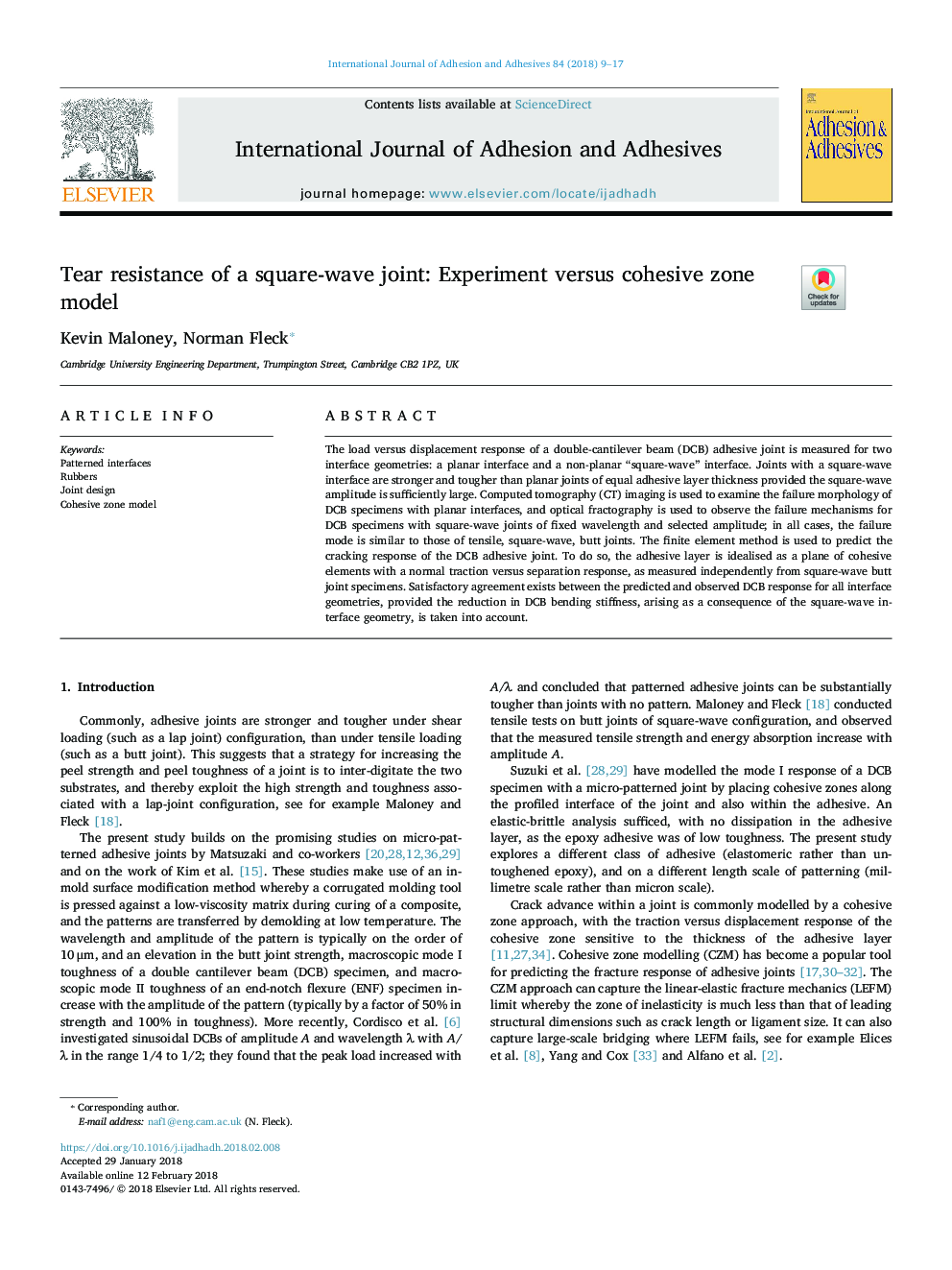| Article ID | Journal | Published Year | Pages | File Type |
|---|---|---|---|---|
| 7170880 | International Journal of Adhesion and Adhesives | 2018 | 9 Pages |
Abstract
The load versus displacement response of a double-cantilever beam (DCB) adhesive joint is measured for two interface geometries: a planar interface and a non-planar “square-wave” interface. Joints with a square-wave interface are stronger and tougher than planar joints of equal adhesive layer thickness provided the square-wave amplitude is sufficiently large. Computed tomography (CT) imaging is used to examine the failure morphology of DCB specimens with planar interfaces, and optical fractography is used to observe the failure mechanisms for DCB specimens with square-wave joints of fixed wavelength and selected amplitude; in all cases, the failure mode is similar to those of tensile, square-wave, butt joints. The finite element method is used to predict the cracking response of the DCB adhesive joint. To do so, the adhesive layer is idealised as a plane of cohesive elements with a normal traction versus separation response, as measured independently from square-wave butt joint specimens. Satisfactory agreement exists between the predicted and observed DCB response for all interface geometries, provided the reduction in DCB bending stiffness, arising as a consequence of the square-wave interface geometry, is taken into account.
Related Topics
Physical Sciences and Engineering
Engineering
Mechanical Engineering
Authors
Kevin Maloney, Norman Fleck,
